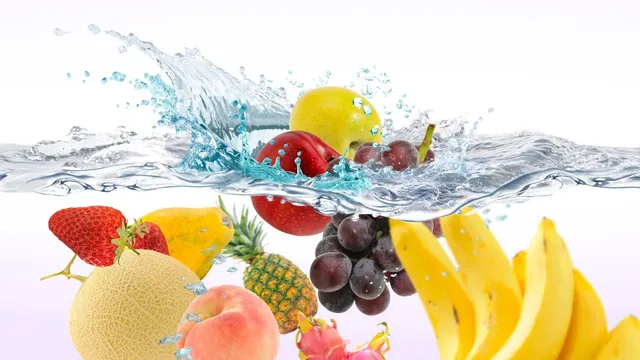- By Aditi Priya Singh
- Sun, 27 Jul 2025 09:08 PM (IST)
- Source:JND
Why Some Fruits Floats On Water: Have you ever dropped a fruit in a bucket of water and noticed it didn’t sink? It just floated there like a little boat. Some fruits have a unique ability to float on water, which surprises many people. We usually expect solid things to sink, especially when they’re heavy or full. But not all fruits behave that way.
This unusual floating ability isn’t about magic, it's about science. Inside some fruits, there's a secret that helps them stay on the surface, even when they look large or juicy. Kids often ask why some apples float and others don’t. Even adults are surprised to know that some fruits are designed by nature to stay above water. But what makes them different?
This floating nature isn’t just a fun fact, it actually helps plants in spreading their seeds, surviving floods, or being transported long distances by rivers and oceans. But what is inside these fruits that helps them stay afloat? Let’s find out which fruits float and why!
Why Do Some Fruits Float on Water?
Sometimes, what we see on the surface doesn’t reveal the secrets hidden inside. Certain natural items behave unexpectedly when placed in water, leaving us curious. Their special internal structure plays a key role in this surprising behaviour. Fruits float when their overall density is lower than water. This happens due to:
1. Air pockets or empty spaces inside the fruit
2. Porous texture of the fruit flesh
3. Low moisture content in some fruits
4. Thicker peels that trap air
5. Special design by nature to spread seeds
6. Some fruits contain up to 25% air, which helps them stay light and buoyant.
Top Fruits That Float on Water Due to Air Content
Here are some common fruits that float on water:
1. Apple: Apples are one of the best-known floating fruits. About 25% of their volume is air, especially in the soft part inside. This trapped air helps apples float easily.
2. Pear: Pears have similar air pockets to apples.Their texture may be slightly denser, but most pears still float.
3. Orange: Oranges float mainly because of their thick, porous peel.The peel traps air, even if the inside is juicy.
4. Watermelon: Surprisingly, watermelons float despite being so big.This is because their flesh has high water content and tiny air spaces.
5. Banana: Bananas can float due to the soft, airy structure of their insides. However, very ripe or peeled bananas may sink.
6. Coconut: Coconuts are nature’s seed ships!
They float easily in oceans due to their fibrous outer shell and air cavity inside.
Why Nature Designed Floating Fruits
Nature always has a smart reason behind every design. Some fruits are built in a way that helps them travel far and wide. Their unique ability supports their survival, letting them reach new places and grow in different environments. Here are some of the key reasons that cause fruits to float on water.
1.Travel by water to new locations
2. Survive floods or rainy seasons
3. Grow away from the parent plant
4. Coconuts, for example, can travel for miles across oceans and still grow on beaches.
Fruits like apples, oranges and coconuts float not because they’re light, but because of clever designs inside them. Trapped air makes them buoyant, like a life jacket. So next time you see a fruit bobbing in water, remember it's a little science lesson in your kitchen!

